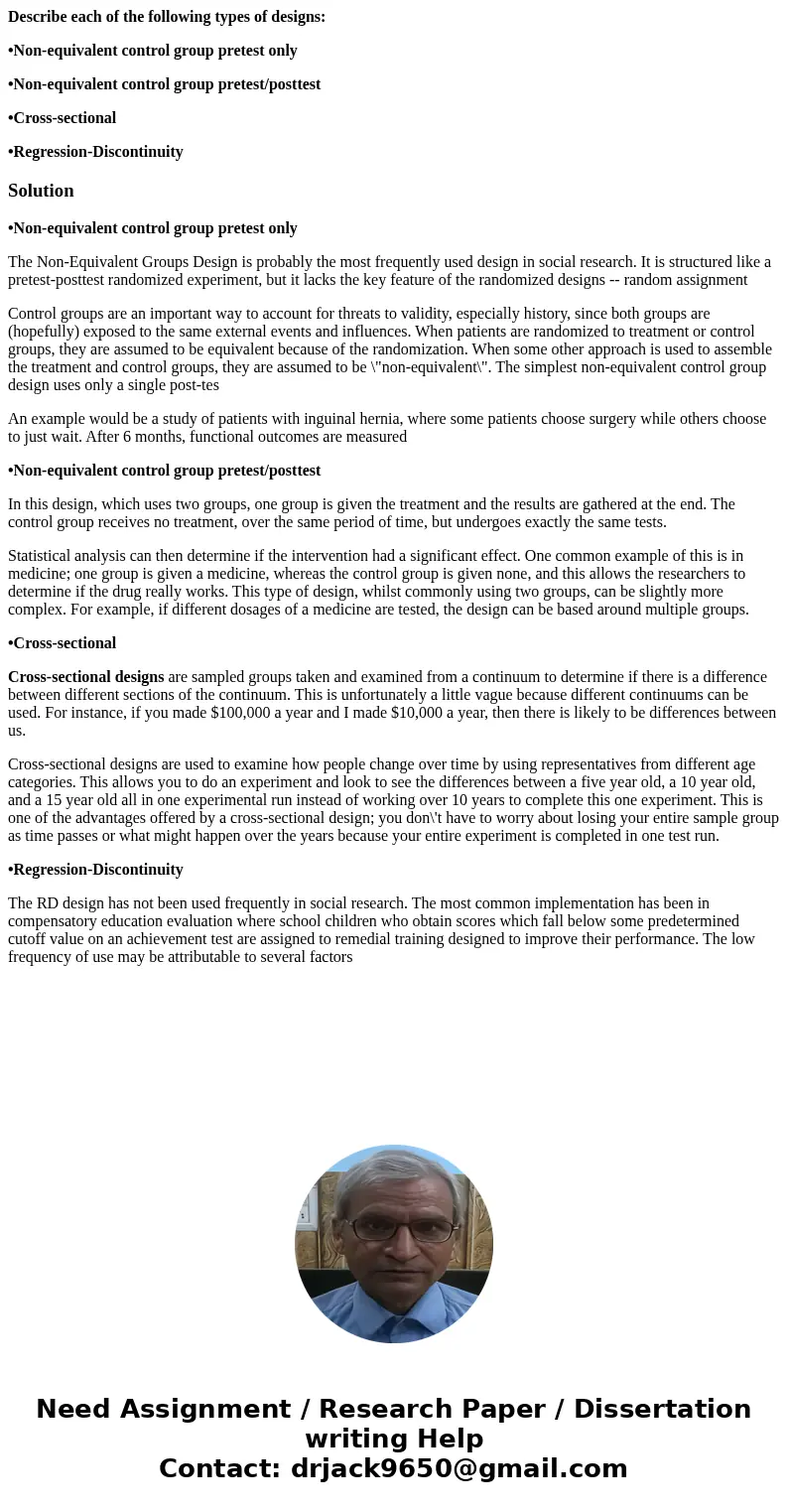Describe each of the following types of designs Nonequivalen
Describe each of the following types of designs:
•Non-equivalent control group pretest only
•Non-equivalent control group pretest/posttest
•Cross-sectional
•Regression-Discontinuity
Solution
•Non-equivalent control group pretest only
The Non-Equivalent Groups Design is probably the most frequently used design in social research. It is structured like a pretest-posttest randomized experiment, but it lacks the key feature of the randomized designs -- random assignment
Control groups are an important way to account for threats to validity, especially history, since both groups are (hopefully) exposed to the same external events and influences. When patients are randomized to treatment or control groups, they are assumed to be equivalent because of the randomization. When some other approach is used to assemble the treatment and control groups, they are assumed to be \"non-equivalent\". The simplest non-equivalent control group design uses only a single post-tes
An example would be a study of patients with inguinal hernia, where some patients choose surgery while others choose to just wait. After 6 months, functional outcomes are measured
•Non-equivalent control group pretest/posttest
In this design, which uses two groups, one group is given the treatment and the results are gathered at the end. The control group receives no treatment, over the same period of time, but undergoes exactly the same tests.
Statistical analysis can then determine if the intervention had a significant effect. One common example of this is in medicine; one group is given a medicine, whereas the control group is given none, and this allows the researchers to determine if the drug really works. This type of design, whilst commonly using two groups, can be slightly more complex. For example, if different dosages of a medicine are tested, the design can be based around multiple groups.
•Cross-sectional
Cross-sectional designs are sampled groups taken and examined from a continuum to determine if there is a difference between different sections of the continuum. This is unfortunately a little vague because different continuums can be used. For instance, if you made $100,000 a year and I made $10,000 a year, then there is likely to be differences between us.
Cross-sectional designs are used to examine how people change over time by using representatives from different age categories. This allows you to do an experiment and look to see the differences between a five year old, a 10 year old, and a 15 year old all in one experimental run instead of working over 10 years to complete this one experiment. This is one of the advantages offered by a cross-sectional design; you don\'t have to worry about losing your entire sample group as time passes or what might happen over the years because your entire experiment is completed in one test run.
•Regression-Discontinuity
The RD design has not been used frequently in social research. The most common implementation has been in compensatory education evaluation where school children who obtain scores which fall below some predetermined cutoff value on an achievement test are assigned to remedial training designed to improve their performance. The low frequency of use may be attributable to several factors

 Homework Sourse
Homework Sourse